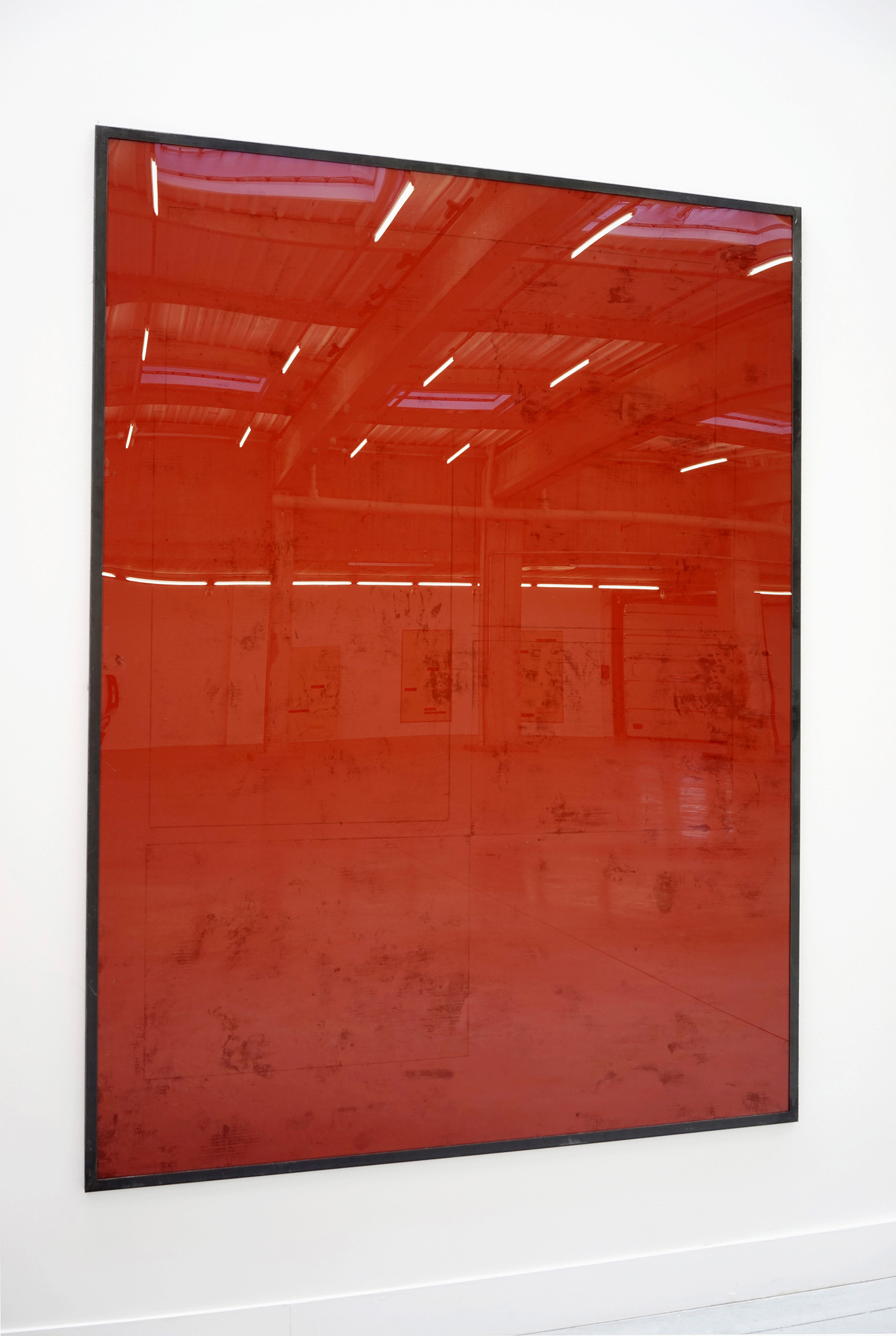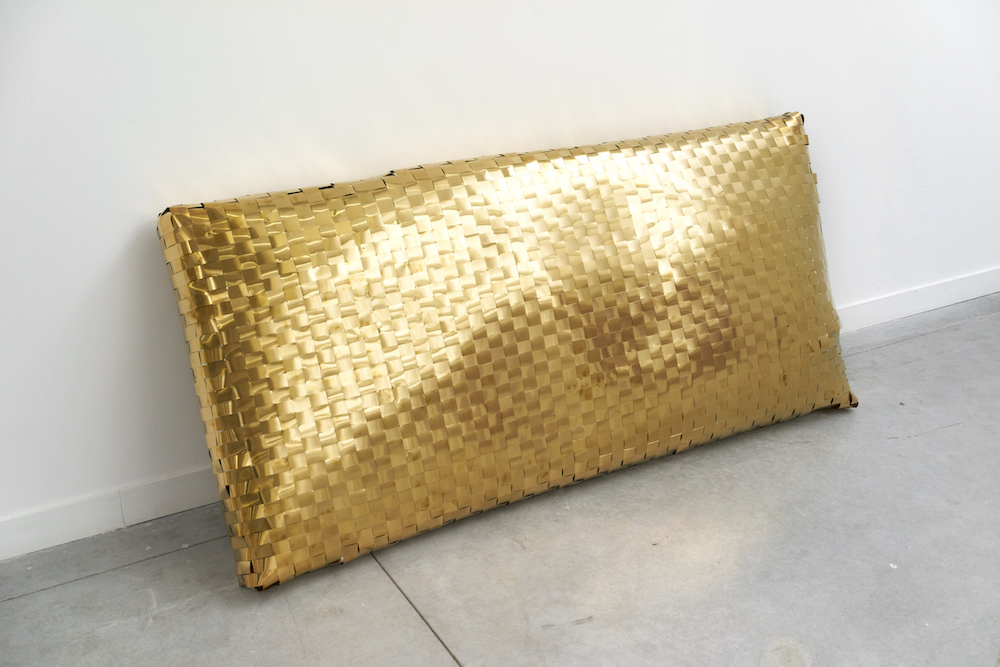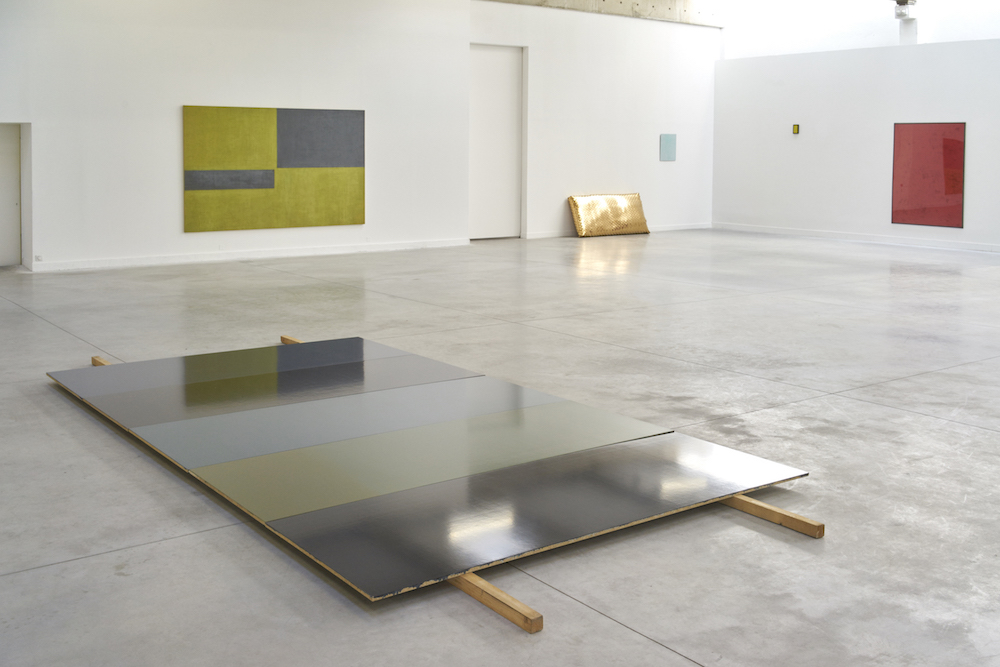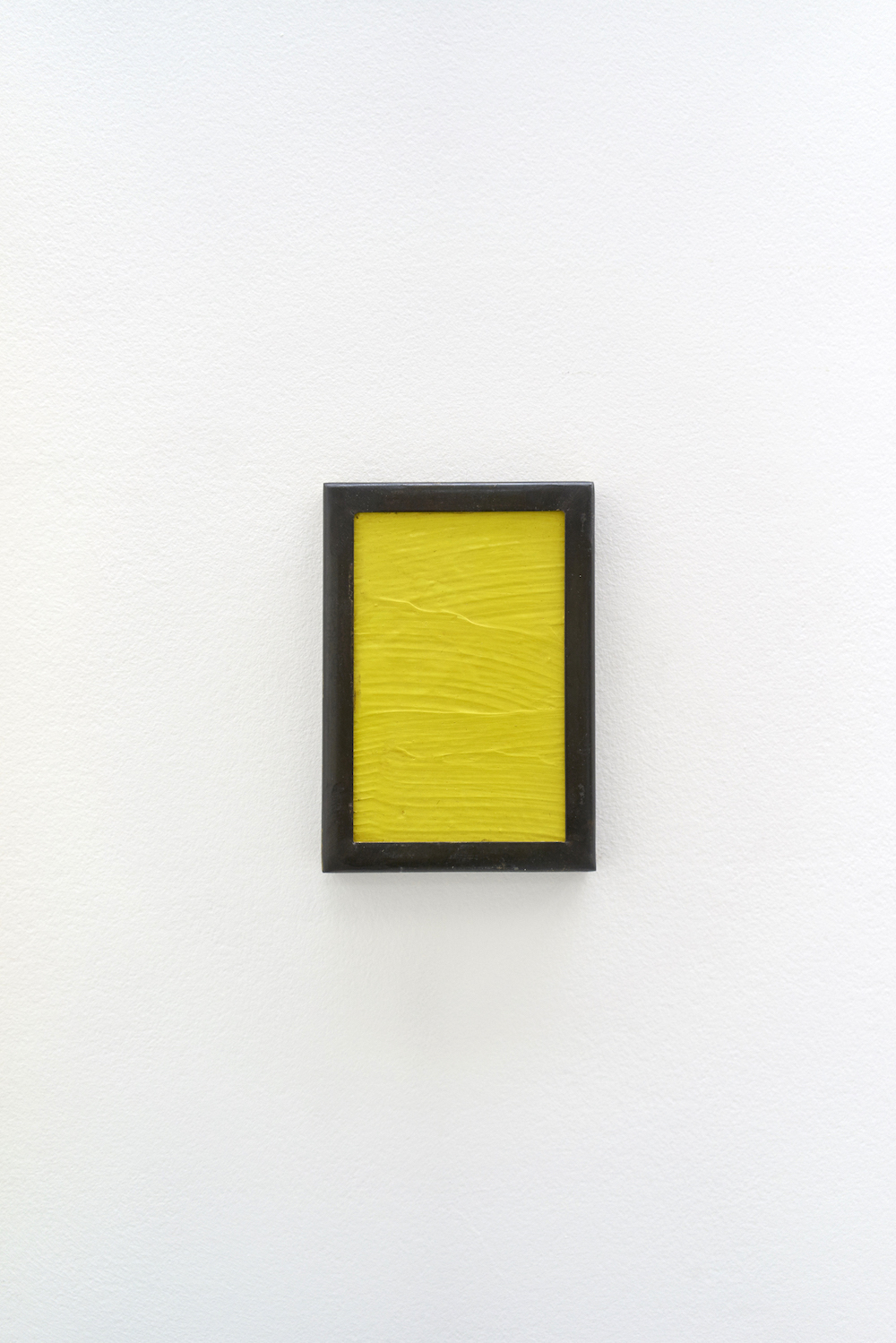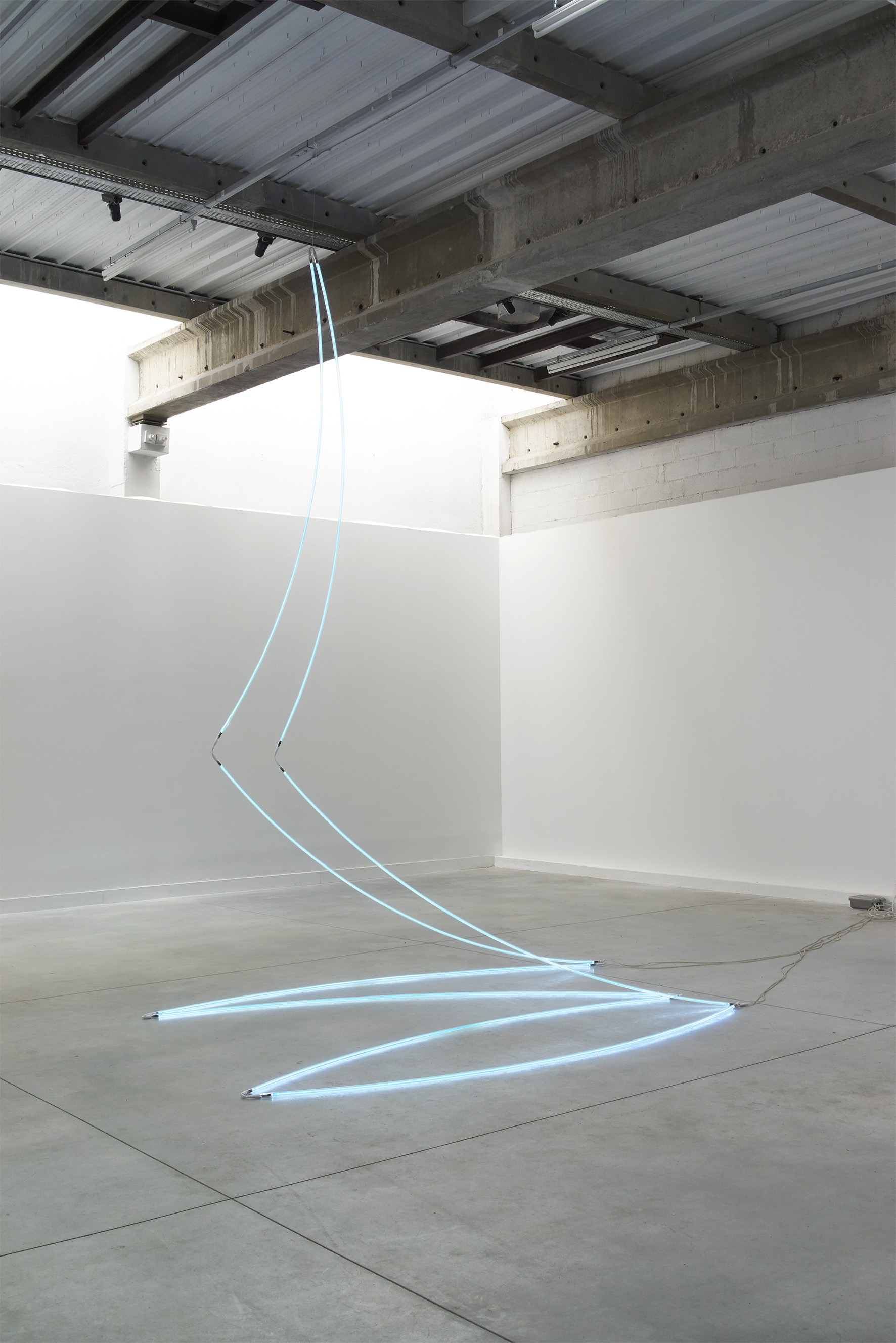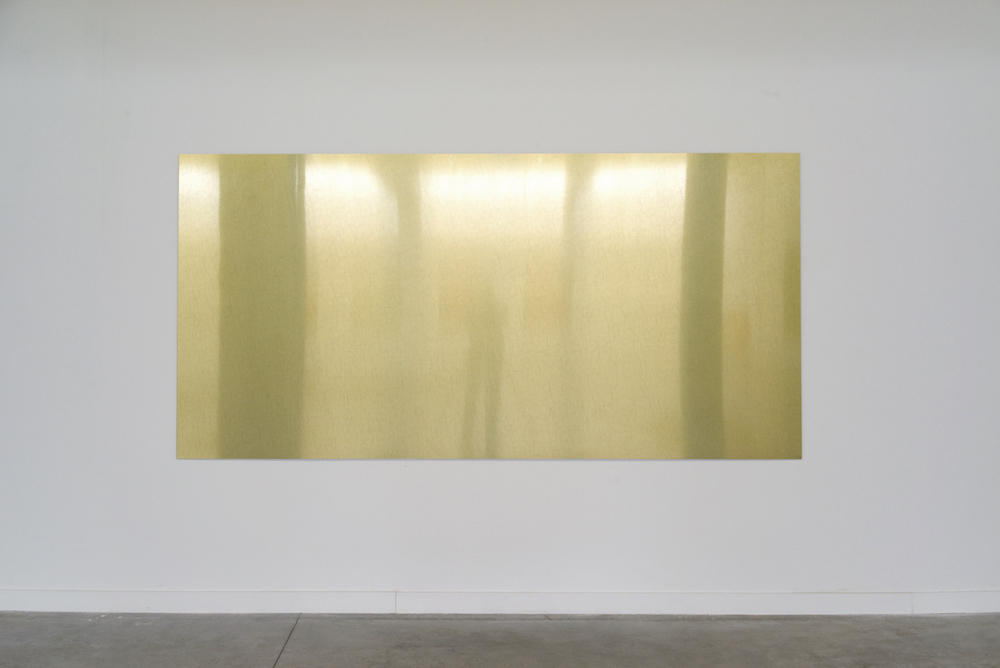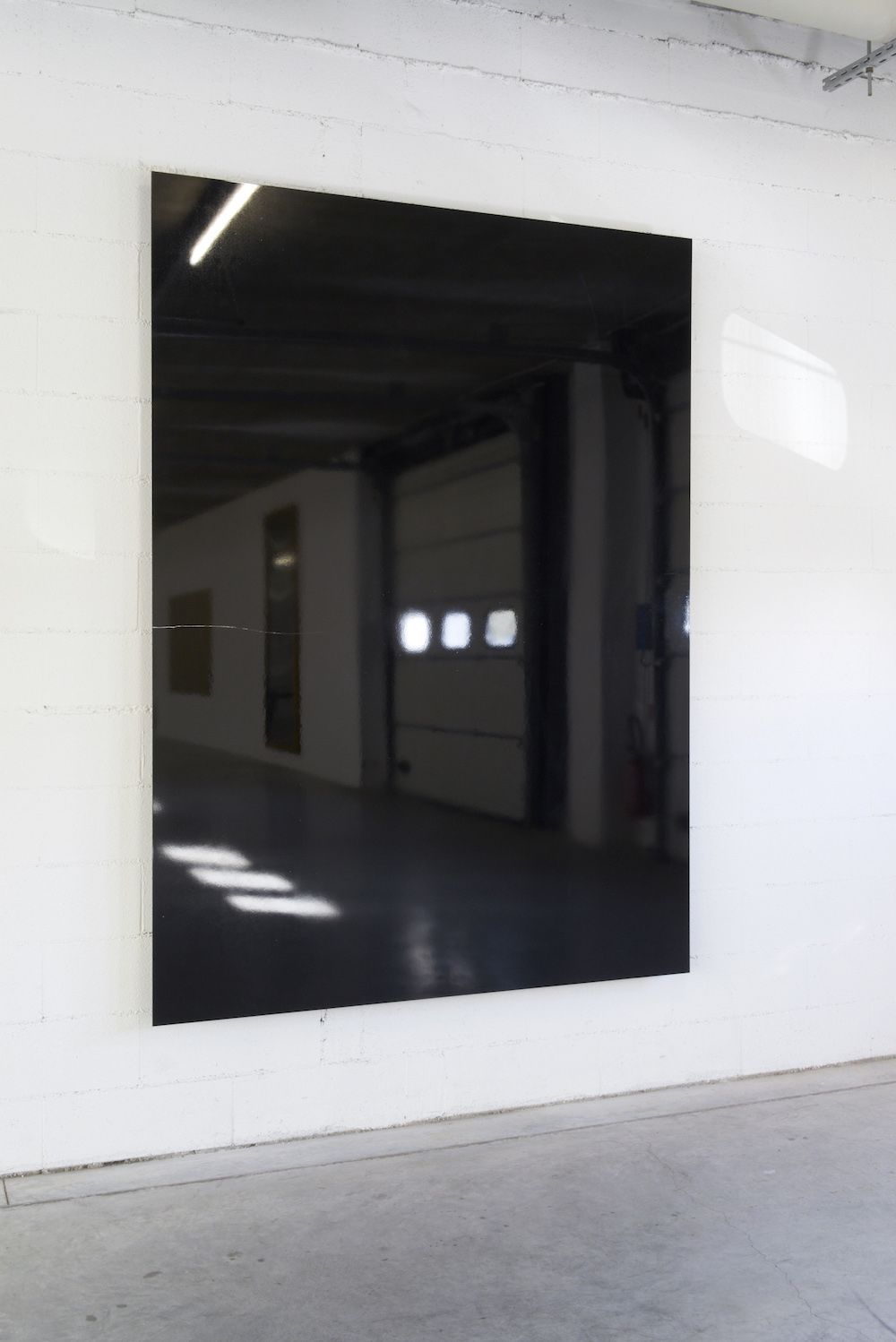A sense of excitement can be felt in the warm Marseille evening air as people gather for the opening of Aux Amis (For Friends), an exhibition in celebration of the lives of two recently deceased friends. The large open space has an industrial quality to it–the building stands alone near a parking lot, a stone’s throw from the port. The artworks are positioned sparsely in a large open room, aptly called The Box, although the space features huge glassless holes in the walls which allow for a pleasant evening breeze. There’s a palpable feeling of freedom and openness as people mill around the room to gaze at the stylishly arranged works.
The Box used to be a slaughterhouse before Marie Hélène and Marc Féraud transformed it into a home for their foundation M-Arco’s collection. The history of death seems to inhabit the space and gives added resonance to the deceased being commemorated today. Féraud explains that when he visited the slaughterhouse for the first time it still had the smell of all the cutting equipment and blood and he knew it had to be made into a place of art.
Marc Féraud has a gentle and unassuming manner as he takes us around the room and discusses the collection. The eclectic range of pieces are all united by an exploration of form and an examination of how it shapes meaning. “We like simple shapes and deep meanings,” he tells us. All of the pieces do seem to be guided by a specific logic and formal structure while at the same time seeming to want to burst out and re-define their own parameters.
It is moving having Féraud explain the significance of works produced by his recently deceased friends–he seems sombre and reflective and it’s clear he feels a passion for the capsules of expression they have left behind. Jean-Pierre Bertrand’s large canvasses are some of the most striking works on display and they form part of a series of works from a decade in which the artist toyed with the boundaries of the form. He was initially inspired by great writers such as Daniel Defoe and Jorge Luis Borges, and his work is governed by a very particular order and arithmetic. In the three large red canvases on display, Bertrand explores something primal in our nature, “the presence of red within ourselves”, as Patrick Jouvault writes. On close inspection, you can see panels within the canvases which appear to be organized according to an architectural order. The contrast between the loose brush strokes of red and these arithmetical panels hints at an interplay between order and improvisation, both of which constitute human expression.
Bertrand and his wife Nina had a house in Marseille and used to share their time between there and the capital. “Jean Pierre was an extraordinary artist, mixing paints and pigments with organic, mineral and vegetal elements,” Féraud explained. “Like a shaman, he did not wish to speak about his work; I kept his secrets, but maybe he will reveal them one of these days.”
François Morellet’s works exhibited at The Box include two dynamic pieces which play with conceptions and interpretations of form. One titled Lamentable is a sculpture–a circle formed of eight arcs hanging from the ceiling by a point. The form appears to have collapsed to the ground “lamentably”, however, as Féraud explains, “When you see this simple, elegant and brilliant neon, it gives the contrary impression of rising to the sky.” Another work on display is called Plus ou moins
(plus or minus)–a sequence of horizontal and vertical black lines positioned on the wall which move gradually closer together to form a plus sign. Morellet manages to create something which is at the same time moving and static and raises the question of how simple adaptations of form affect and effect meaning. The coming together (or entering) of the vertical and horizontal lines also has a sexual quality to me–the entering of one object by another to create something which is certainly “more” than the sum of its parts.
The Box marked the beginning of our journey through and around the urban artistic bedrocks of Marseille, from galleries to collective work spaces and the fair itself. As we floated from place to place, we constantly heard whisperings of the incredible collection at La Fabrique. When we finally arrived, on the last day of our trip, sweating, grumpy and running on four hours sleep, the gallery did not disappoint. Le Fabrique hosts a breath-taking selection of artworks which speak to the curious and diverse tastes of Josée and Marc Gensollen.
The space itself is a converted textile mill (the gallery’s namesake) and has a winding structure which lends it a homely feel. It is in fact home to the Gensollens, as well as to one of the most illustrious private collections in France today. The Gensollens are both practising psychiatrists and psychoanalysts who share a practice and work exceptionally long hours. Their collection includes works by Gabriel Orozco, Franz West and Liam Gillick.
These two art collections, which bookended our trip beautifully, demonstrate how couples can intertwine their passions to form inspired collections, informed by their unique life experiences, interests and characters.
Images: “Aux Amis (For Friends)” at the collection of the M-ARCO Fund.
